Block planes-1st question answered
Since you asked for suggestions; I would really like to get some advice on blockplanes and your take on them. I imagine that a low angle one would be handy? I have standard angle one, without an adjustable mouth, and since that one don’t get used much I hesitate to buy another one.
— Mrnanowire
I will get myself in trouble on this one so I’m putting on a hardhat before I start. I am pretty thick-skinned these days because I go against the flow more than ever it seems.
So, this is my perspective and most likely no one else’s.
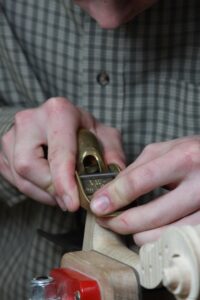
Here I am using a block plane to level and smooth an inset repair and that’s is a function block planes can be ideal for.
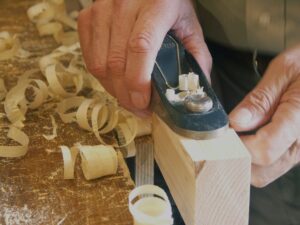
People often consider the bevel-up plane to be more effective because of the low bedding angle supporting the iron, but the difference between a block plane and a smoother is only marginal when it comes to sharpness or angle of presentation because the bedding angle of a low-angle bevel up is usually around 12-degrees and the bevel on the bevel-up plane is around 30-degrees. Combining these two angles totals about 42-degrees and so the angle of presentation closely parallels the bedding angle of the smoothing plane at 44-degrees.
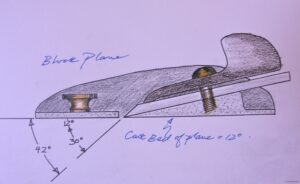
The thing that makes the key difference then is the in-line point of thrust that gives more direct thrust behind the cutting edge and so minimizes any vibration or flex at the very cutting edge.
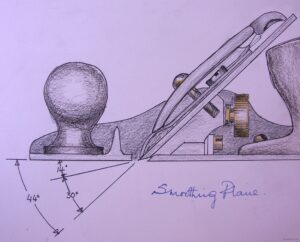
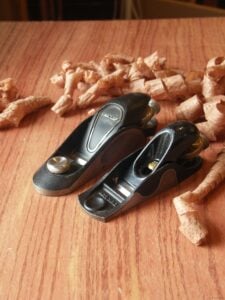
Now then, even though there is little difference in the angle of presentation, there are differences in use, technique and so on. I like them for particularly fine work and also for convenience. In the picture here you see two block planes. The one on the right is the Veritas apron plane, which is an effective plane and very handy. The other plane is a highly refined block plane again made by Veritas. I used this on the White House credenzas I designed and made for the Cabinet Room of the White House back in 2009 and found this extremely accurate and ideal for fine, close and tight work.
This image below shows the conventional bedded angle of a Bailey pattern bevel-down plane alongside a low angle bevel-up jack plane. You begin to see how people can think one to have a lower angle of presentation than the other even though they closely parallel one another.
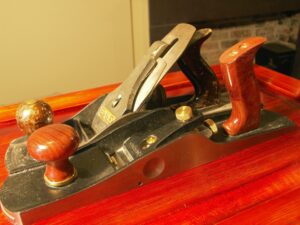
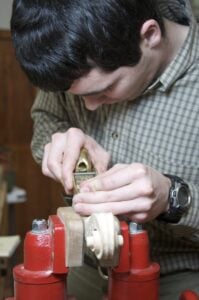
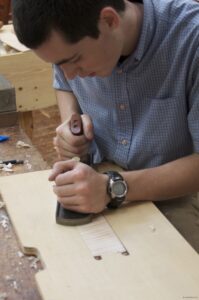
Conclusion:
Block planes are good practical planes, but on the ladder of essential planes, on a scale of 1 through 10, 1 being highest priority for general users, I might put them somewhere near a #3.


Whereas it’s true the cutting irons come with manufacturers bevels and indeed that could be any angle, I am talking about the reality of craftsmen establishing their own bevels. I would never accept a manufacturers bevel unless it was one that suited me. I am talking about the bedded angle of the iron, which on all Veritas low-angle planes is 12-degrees. Add to that the universal standard for a practical and viable edge, which is 30-degrees and you have 42-degrees. I would never use an alternative bevel except when increasing the pitch for a ‘York’ pitch, which is not that often and occurs in seconds.
I think that that will generally be the case, especially in the early days when people are still developing wrist and arm strength alongside skill.